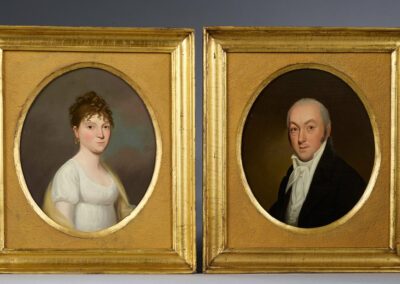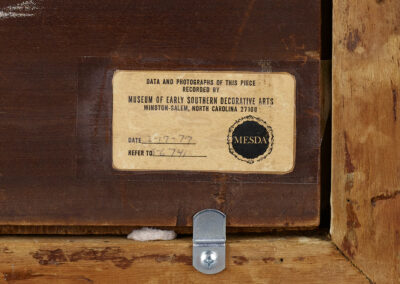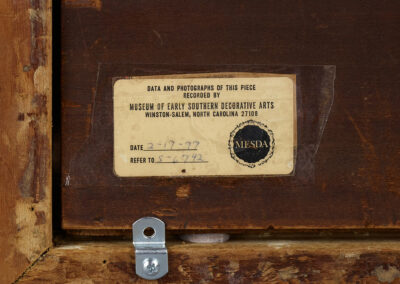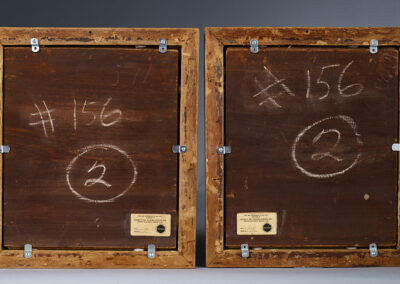PORTRAITS OF ATTORNEY GENERAL AND STATE SUPREME COURT JUSTICE FREDERICK SMITH AND HIS WIFE CATHARINE
Oil on tulip poplar panel
Circa 1790-1810
11.5” x 9.5”
Frederick Smith (1773-1830) and Catharine Smith 1776-1855
Unsigned
Oil on poplar panels
Circa 1805-1808
11.5 x 9.5”
A pair of superb portraits of Frederick Smith was an influential judicial official in early 19th century Pennsylvania and his wife, Catharine Leaf Smith. Smith served as Attorney General of Pennsylvania 1823-1828 and an associate of the Pennsylvania State Supreme Court from 1828 until his death in 1830. Born in Germantown, he graduated from the University of Pennsylvania in 1792 and studied law in the office of Jared Ingersoll, a signer of the Constitution. In 1794 Smith moved to Reading and practiced law on Berks, Lehigh, Northampton and Schuylkill counties. In 1797 Smith married Catharine Leaf (1776-1885) and the couple had four children.
Smith became actively interested in politics and served in the Legislature in 1802 and 1803 while continuing to practice law. In 1809 he was part of the team defending, unsuccessfully, the controversial Susanna Cox. According to later accounts, she was appointed three of the best lawyers in Berks County which gives an indication of Smith’s legal competency at the time.
He was appointed deputy attorney general for Berks County in 1818. In 1823, Governor Shulze offered Smith the position of Secretary of the Commonwealth, which he declined, but then offered him the position of state Attorney General, which he accepted. He served until 1828, when he resigned upon being appointed to the state Supreme Court, where he served until his death in 1830.
A 19th century biography describes Frederick Smith: “Judge Smith was clear and logical in his reasonings, and just and impartial in his decisions. He died at his home in Reading, after but a brief illness, Oct. 5, 1830, aged fifty-seven years, seven months, four days, and his remains were interred in the Roman Catholic cemetery, but later removed to the Charles Evans cemetery. The Bar Associations in Reading and in Philadelphia passed resolutions in testimony of his high character and distinguished ability.”
When acquired, this pair of portraits were mis-identified as two persons belonging to the Moore-Robinson family of Historic Chelsea Estate in King William County, Virginia. They each bear a Museum of Early Southern Decorative Arts labels on the reverse (S-6741 and S-6742).



